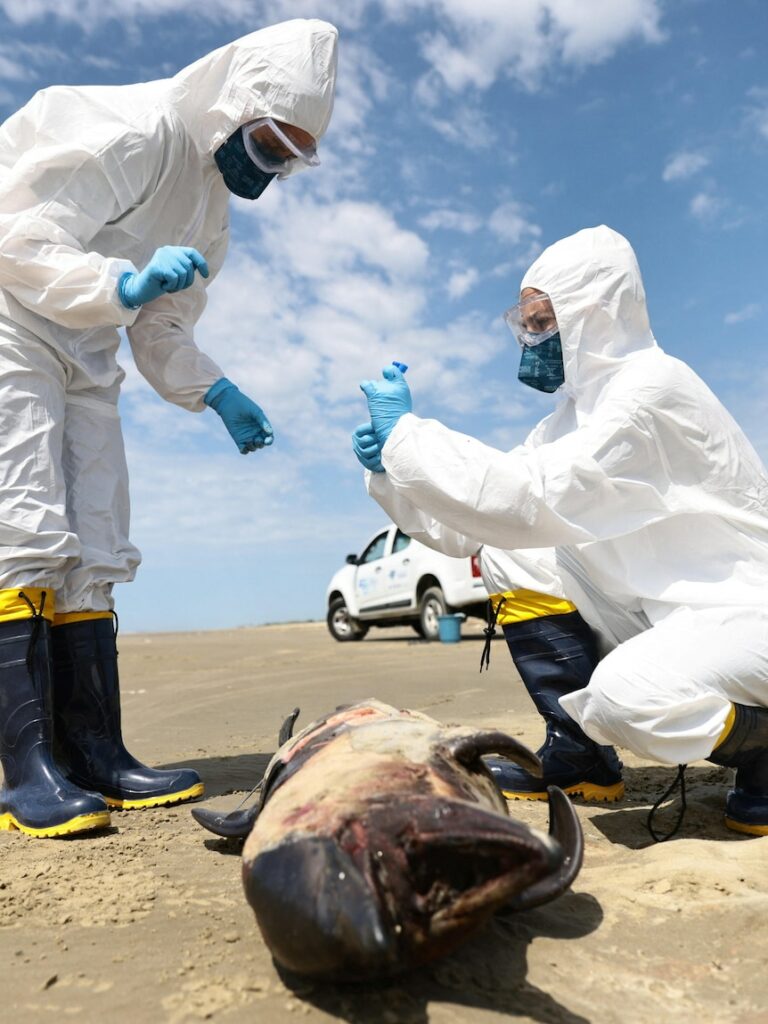In short:
The Australian Centre for Disease Preparedness says the H5N1 strain has been detected to Australia’s north and south.
The strain has been detected in farm workers in the US and in a range of animal species.
What’s next?
Surveillance for signs of the disease’s arrival is continuing.
Australian disease authorities are looking to the north and south of the country as they prepare for an outbreak of a bird flu strain that has caused a global animal pandemic.
They said there was an increasing risk the H5N1 bird flu would appear in Australia in the spring.
It has crossed into wild animal species and livestock in other countries — including dairy herds in the United States.
Colorado Public Health Department said in a statement it had confirmed human cases of the strain in poultry workers.
Closing in on Australia
Australian Centre for Disease Preparedness senior research scientist Frank Wong said northern Australia’s remoteness could pose surveillance challenges.
Australia was not on the flight paths of large migratory water birds such as ducks and geese that travelled long distances and had helped spread the H5N1 bird flu around the world.
But authorities said birds from Asia that came into contact with infected migratory birds could bring the virus to Australia.
They said there was also a risk from the south of the country after an elephant seal was found dead in Antarctica with the H5N1 virus.
“Where it has touched base in Antarctica is basically south of Chile and Argentina,” Dr Wong said.
“That part of the Antarctic continent is pretty much the opposite side of Antarctica closest to Australia.”
He said more would be known about the risk from Antarctica after winter.
“The impact to bird and animal species in Antarctica is still relatively unknown because the detection is quite recent and it’s now the Antarctic winter,” Dr Wong said.
“As spring comes, we will know a little bit better how the virus may either have any continuing impact to birds in the Antarctic continent, or whether we’re no longer detecting the virus.”
‘Concerning’ cases
The United States’ peak disease body, Centers for Disease Control and Prevention, said the risk to humans remained low despite more farm workers testing positive for H5 bird flu.
The virus has been found in more than 100 dairy herds across at least 12 states in the US.
Farm workers culling infected chickens and dairy workers milking infected herds have contracted the virus.
The cases were “concerning” because of the potential to cause severe disease and wider outbreaks, the centre said in a statement.
“If these viruses were to change to spread easily from person-to-person, it could trigger a pandemic, though, to date, we have not seen genetic changes in the virus that would make it more likely to transmit between humans.”
The H5N1 strain of the virus has caused mass mortality events among birds in Antarctica.(Supplied: Meagan Dewar)
Homegrown avian influenza
Three states and territories in Australia have been battling to control outbreaks of H7 strains of avian influenza at poultry farms.
Australian Centre for Disease Preparedness director Debbie Eagles said it was not yet clear how long the H7 outbreaks in Australia would last.
“It is the most number of highly pathogenic avian influenza strains that have been detected at the same time in Australia,” Dr Eagles said.
“It’s difficult to say how long they will take to control.”
While the H5 and H7 strains of avian influenza had been known to infect humans, authorities said the risk from H7 remained low.
Health authorities said eggs and poultry meat were safe to eat provided they were handled and cooked according to standard food handling practices.
Stories from farms and country towns across Australia, delivered each Friday.
>>> Read full article>>>
Copyright for syndicated content belongs to the linked Source : ABC News (AU) – https://www.abc.net.au/news/rural/2024-07-15/h5n1-bird-flu-strain-australian-disease-authorities-surveillance/104099408
